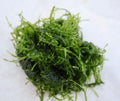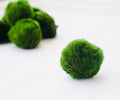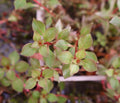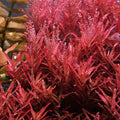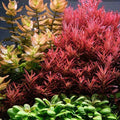How to Create a Self-Sustaining Fish Tank
This blog post will teach you how to make one now that you've decided to construct a self-sustaining fish tank. See the steps and get ready to create your self-sustaining aquarium with wholesome fish and plants.
How to Create a Self-Sustaining Fish Tank
Step 1: Clean Your Tank
As was previously said, if you want to make your tank self-sustaining, its volume must be between 30 and 200 gallons. As soon as you receive it, properly clean it to get rid of all the impurities. It will guarantee that your plants and pets won't get an infection.
Step 2: Add Substrates
Start layering the substrates, which include dirt, sand, and gravel, in the tank. Sand and gravel should be placed on top of the soil at the bottom. The general recommendation is to add 2 inches of sand and 1 inch of gravel on top. Additionally, you can purchase pre-made substrate mixtures from fish shops. These ready-made combinations can simply be poured from the bag into the tank.
Step 3: Add Water
Adding high-quality, treated water is crucial when setting up a self-sustaining fish tank. Verify if the water's parameters fall within the acceptable range. Since the water from a previous tank already contains some crucial nutrients that promote growth, it would be ideal if you could access it. The fish are less stressed when they are in the water from the preceding tank, though.
Step 4: Add Plants
The aquarium looks more beautiful with plants, but before adding any plants, consider if you want live or artificial ones. Make sure artificial plants are completely clean and devoid of any poisonous substances that could endanger your fish before introducing them. Make sure that any live plants you add to the aquarium are appropriate for the fish, though. Consider your plants' growth patterns as well. The size and rate of growth should be taken into account since we are constructing a self-sustaining tank that you can leave unattended for several days. Include some plants with low growth, like hair grass, other plants with high growth, like duckweed; and some plants with small branches, like java moss and phoenix moss.
Step 5: Include Aquarium Accessories
It is equally vital to add aquarium equipment like filters, air pumps, heating systems, water testing kits, thermometers, etc. In this stage, you fill the tank with all the non-living elements: heating systems, water testing kits, thermometers, etc. In this stage, you fill the tank with all the non-living elements. Verify that every piece of equipment is in good working order and provide accurate readings.
Step 6: Add Microfilters
Some of the best micro-filters you can add to your self-sustaining tank include snails, daphnia, and microplanarians. They serve two main purposes: first, they clean the tank by consuming trash and algae, and second, they provide food for carnivorous fish. The tank's microfilters take around two weeks to become established.
7th step: Add fish.
Your fish in the aquarium, the main attraction, can now be added. Introduce fish once the microfilters have taken hold and the plants have rooted. Guppies are a good place to start, then move on to larger species. The quantity and size of fish you introduce will depend on the size of your aquarium.
After a self-sustaining tank has been fully set up, feed your fish for at least the first week. In the meantime, the plants will grow up and the microorganisms will start to multiply, making the tank ready and able to live on its own.
How to Care for an Self-Sufficient Tank
You may unwind and watch your underwater pals play now that your self-sustaining tank is ready. The time, energy, and labor saved by a self-sustaining tank are unquestionable, but after a few days, you must perform a small water change and remove trash just for the sake of your fish.
You may manage your self-sustaining tank in the following ways to keep your fish and living plants in good health.
Which self-sustaining tanks are the best?
There are many sustaining tanks available, and their prices range widely. Your needs will determine what you choose: if you are an experienced fish lover, you may want to choose something more expensive; if not, or if you want to get an aquarium as a gift for your child, choose something less expensive. However, your fish will indeed like any aquarium you purchase.
Water Change
Similar to how you would change the water in a standard tank, but with extra care, you must change the water in your aquarium. We have attempted to maintain a natural food chain in a fish tank that can sustain itself, thus careful attention to water parameters is necessary. The ecosystem of the tank will be disturbed by a sudden change in water parameters, which will stress the fish.
Only 10 to 20 percent of the tank's water should ideally be changed every two weeks. It will make sure that the tank has the right amount of bacteria, which helps maintain the natural food chain. Additionally, it will maintain the water's high standard, preserving the well-being and health of the fish.
Minimize the Algae Growth
In a typical tank, algae growth is a cause for concern. When it comes to a self-sustaining fish tank, however, the fish eat most of the algae, keeping the tank clean. Even though the fish eat the majority of the algae, they can occasionally grow so quickly that they impair the tank's aesthetics. To eliminate uneaten food, trash, and algae, you must vacuum the gravel when changing the water. Make sure to keep microfilters like snails and daphnia in a self-sustaining tank because they are essential for controlling algae.
Remove any Dead Fish.
It's hard to say, but your fish will pass away at some point in their existence. You must take them out of the tank as soon as possible if they pass away, regardless of whether they do so through stress, illness, or after living their complete existence. A dead fish will begin to decompose if it is left undiscovered in the water for too long, which can disrupt the nitrite and ammonia levels. The fish could suffer because of it. If it does, use a reliable testing kit to check the ammonia and nitrate levels in your tank right away. Replace the water right away if it is too high.
Conclusion
A self-contained tank has various advantages. There are some darker aspects to it, though. A self-sustaining tank, for instance, requires more time to set up than a standard tank. Additionally, you are limited in your options because you cannot put any fish or plants in it. A compulsion to use algae eaters develops at the same time.
Setting up a self-sustaining tank requires careful consideration of the appropriate parts and fish and plants that work well together. However, once it is established, you can take a few days off and unwind without worrying about your fish, plants, or water conditions. They will all work together to build an ecosystem and a food chain that can last for many days. Therefore, try your hand at building up a self-sustaining fish tank and keeping your fish stress-free if you're busy or frequently travel on long excursions.



